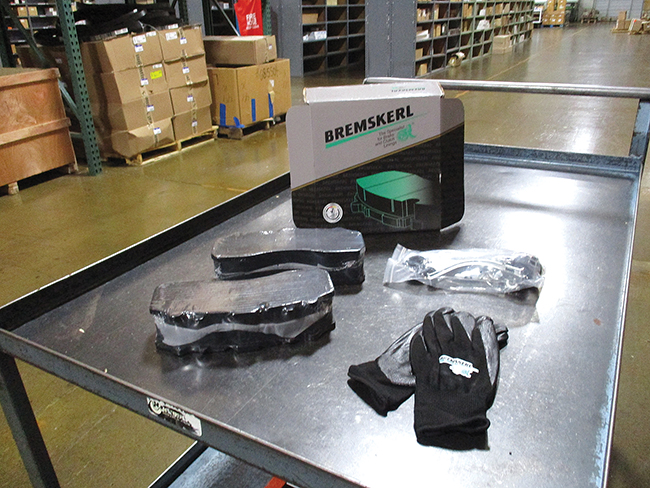
By T.J. Brown
![]() As disc brakes have become more prominent in the bus industry, more suppliers have entered the marketplace. That is good news to maintenance professionals who need to mind their budgets and keep a high standard of safety. But it also means that maintenance personnel have a little extra homework to ensure only qualified products supply their fleets.
As disc brakes have become more prominent in the bus industry, more suppliers have entered the marketplace. That is good news to maintenance professionals who need to mind their budgets and keep a high standard of safety. But it also means that maintenance personnel have a little extra homework to ensure only qualified products supply their fleets.
At Mohawk, we have helped customers troubleshoot issues with their drum brakes for more than 60 years. Over the past 20-plus years, we have serviced disc brakes, too. More recently, we have become an industry distributor for leading German brake pad manufacturer Bremskerl, and with them we’ve worked with transit and coach operators looking for quality alternatives to original equipment.
Qualifying a supplier’s material is the first step. This includes gathering all the manufacturer’s specifications, material information, and testing data.
“We see some customers who are not using the OE formulation (for pads),” Mohawk Engineering Manager David Lakickas said. “They should know what the edge code is. They should make sure they have the proper friction material for the bus. Issues might come later.
“You should always check thickness of the rotors,” he continued. “It could add to stopping distance and squealing. Be sure you know how often the manufacturer of your rotors recommends you change them and be sure you know the torque specifications.”
Ask as many questions about the material as possible. Suppliers should be able to furnish a spec sheet initially but asking them for more information will allow you to have a better grasp of what quality of material you are putting on your vehicles.
“You want to know it’s coming from a reputable source,” said Michael Konrad, sales and marketing manager for Bremskerl North America. “By that, I mean not just the brand. You’ll want to know who made it for them. You’ll want to know all the hardware that’s in it, the form and fit.
“With brake pads you’ll want to understand the attachment method Some attachment methods are better than others,” Konrad said. “You will want to see some sort of mechanical attachment, and not just an adhesive layer. With rotors, you will want to know the metallurgy is similar to the OE. Quality manufacturers have done extensive life and rotor crack testing. You’ll want to know how it works with the pads you are using. The only way to really know is through testing.”
Konrad explained that while all material should be rated at a minimum to meet FMVSS 121, “it is not the end-all, be-all. You’re going to need to put in on your vehicles to do any life testing.”
A proper testing plan on your coaches is the best way to learn how your replacement parts perform on your equipment. This takes patience.
“Some fleets have the bad habit of switching both the pads and rotors to a new brand at the same time, but the trouble with this is: if you have an issue you will not know what caused it,” Konrad said. “You should first create a baseline with your OE pad and rotor and then change one variable (the pads or rotors) at a time.”
This baseline allows maintenance to isolate where issues come with brake performance later. Measuring how a quality aftermarket rotor performs with the OE pad – and how an aftermarket pad performs with the OE rotor gives you a consistent reference point.
And by testing these parts, you need to be in it for the long haul.
“You can’t put a pad on for one month and extrapolate life because wear rates of friction materials change over time,” Konrad said. “You should test for 33-50 percent of useful life which will give you a better indication if you should expand use of that product but continue to track for 100% of the life on multiple vehicles to alleviate any results skewed by a particular route and/or driver style,
Once you approve a manufacturer’s part, good maintenance practices must continue.
“You should get caliper repair kits and change out the hardware whenever you have to change a pad,” Lakickas said. “This should be part of your maintenance cycle.”
Konrad added that checking rotors for corrosion and rust – particularly for operators in the snow belt where salt use on the road is prevalent – is a must.
“When you have rust in the rotors vanes, your wear (on pads) increases significantly because rust is an insulator and does not allow heat to dissipate as well,” Konrad said.
The competitive marketplace has brought maintenance departments a growing choice of high-quality, high-value options. It is up to maintenance to choose their components wisely.
T.J. Brown is a marketing manager and inside sales manager for Mohawk Mfg. & Supply Co., the largest independent source for bus parts in North America. Visit www.mohawkmfg.com for more information.
